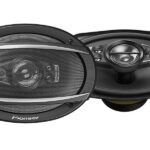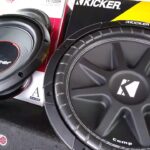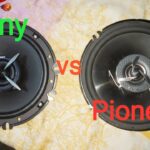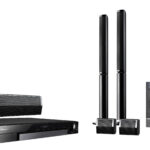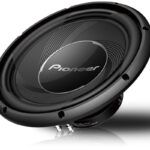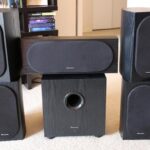Tube amps are often considered better due to their warm and rich sound, which is popular among musicians and audiophiles. They produce a natural and dynamic audio output that many argue surpasses the clarity and precision of solid-state amps.
The debate between tube amps and solid-state amps has been ongoing for decades, igniting passionate discussions among musicians and audiophiles alike. While both types of amplifiers have their merits, the unique characteristics of tube amps make them highly sought after.
Tube amps are revered for their ability to produce warm and rich tones that are often described as more natural and dynamic. This distinctive sound has earned tube amps a loyal following and has contributed to their enduring popularity in the world of music. We will delve deeper into the reasons why tube amps are often considered superior and explore the factors that contribute to their unique sound.
1. Understanding Tube Amps: The Basics
In the world of audio amplifiers, there are different types available in the market. Two common types are tube amps and solid-state amps. Tube amps, also known as valve amps, use vacuum tubes to amplify the electrical signal. On the other hand, solid-state amps utilize semiconductor devices, such as transistors, to amplify the signal.
When it comes to comparing tube amps and solid-state amps, there are some key differences to consider. Tube amps are known for their warm and rich sound, often preferred by audiophiles for their natural and organic tone. They tend to provide a more dynamic and responsive audio experience. Solid-state amps, on the other hand, are generally more reliable and lightweight, offering a cleaner and accurate sound reproduction. They are often favored for their durability and affordability.
Ultimately, the choice between tube amps and solid-state amps depends on your personal preferences and audio requirements. Both types have their own unique characteristics, and it’s important to consider factors such as sound quality, budget, and intended use when selecting an amplifier.
1.1 The Essence Of Tube Amps
The Essence of Tube Amps
How tube amps work
Tube amps, also known as valve amplifiers, utilize vacuum tubes to amplify audio signals. Unlike solid-state amps, which use transistors, tube amps rely on vacuum tubes to produce the desired sound output. The process begins when an electrical signal is passed through the input stage of the amplifier, typically a high impedance tube. Inside the tube, the voltage is divided into different stages, with each stage adding its unique tonal properties to the audio signal. This division of voltage is essential for achieving the warm and rich sound that tube amps are renowned for.
Advantages and disadvantages of tube amps
Tube amps offer several advantages over their solid-state counterparts. Firstly, they provide a distinct and desirable warm tone that many musicians and audiophiles prefer. Additionally, tube amps are known for their dynamic response and ability to handle high volumes without distortion. However, tube amps do have their drawbacks. They are larger and heavier, which can be inconvenient for transportation. They also require regular maintenance and tube replacements, making them more expensive to maintain than solid-state amps. Despite these disadvantages, many enthusiasts believe that the superior sound quality and tonal character of tube amps outweigh the associated costs and inconveniences.
1.2 Unraveling The Myth Of Tube Amps
Are tube amps better? Let’s unravel the myth and address common misconceptions about tube amps. Many audiophiles are drawn to the unique appeal of tube amps, largely due to their distinctive sound characteristics.
One common misconception is that tube amps lack power compared to solid-state amps. However, tube amps can still deliver *high power levels* and are capable of driving even the most demanding speakers.
Another misconception is that tube amps are prone to frequent breakdowns and require regular maintenance. While it’s true that tube amps require more care and occasional tube replacements, these issues can be easily managed by following proper maintenance guidelines.
Moreover, tube amps are often associated with warm and smooth tones, which many audiophiles find pleasing. The *natural harmonics* produced by tubes can provide a rich and dynamic audio experience that enhances the overall listening pleasure.
| TUBE AMPS | SOLID-STATE AMPS |
|---|---|
| Distinctive sound characteristics | More precise and accurate sound reproduction |
| Warm and smooth tones | Clear and detailed sound |
| May require occasional tube replacements | Minimal maintenance requirements |
While solid-state amps offer more precise and accurate sound reproduction, tube amps have a unique charm that appeals to audiophiles seeking a *vintage and organic sound*.
In conclusion, whether tube amps are better than solid-state amps ultimately depends on personal preferences and the desired sound aesthetics. It’s essential to carefully consider each amp’s strengths and weaknesses and choose the one that aligns with your auditory preferences.
2. The Sonic Experience Of Tube Amps
Tube amps have long been revered for their exceptional sound quality and unique sonic experience. The impact they have on sound quality is worth examining, as it is often a key factor in the preference for tube amps among audiophiles.
One aspect that sets tube amps apart is the warm and rich tones they produce. The unique design of tube amplifiers, utilizing vacuum tubes rather than solid-state components, results in a distinctive sound that many find more pleasing to the ear. These amps have the ability to add a certain warmth and depth to the music, enhancing the overall listening experience.
Additionally, tube amps are known for their ability to accurately reproduce the subtle nuances of music. The delicate harmonics and intricate details often get lost in digital or solid-state amplifiers, but tube amps excel in maintaining the fidelity of the original recording.
Furthermore, the natural compression and harmonics created by tube amplifiers contribute to a more dynamic and expressive sound. This creates a sense of depth and dimensionality that can be lacking in other amplifiers.
While tube amps do require more maintenance and tend to be bulkier and more expensive than solid-state alternatives, many audiophiles argue that the unique sonic experience they provide is well worth the investment.
2.1 The Role Of Harmonic Distortion
Harmonic distortion plays a crucial role in the unique sound of tube amps. It contributes to the distinct warm and rich tones that many musicians love. When an audio signal passes through a tube amplifier, the tubes naturally introduce harmonic distortion. These additional harmonics create a more complex sound, adding depth and character to the music. The specific amount and type of distortion vary depending on the design and components of the amp. Tube amp enthusiasts often appreciate the subtle variations in harmonics and the way they interact with different instruments and genres. To truly appreciate the impact of harmonic distortion, it is recommended to listen to examples of tube amp harmonics, comparing them to solid-state or digital amplifiers. This firsthand experience can help you understand and decide whether tube amps are better suited for your musical preferences and playing style.
2.2 The Art Of Tone Shaping
Tube amps have long been revered for their exceptional tone, with many guitarists considering them superior to solid-state amps. One key aspect that contributes to their unique sound is the presence of tubes. Understanding the role of tubes in tone shaping can unlock a world of possibilities in crafting your desired sound.
| Tube Amp EQ Controls | Description |
|---|---|
| Bass | Controls the low-frequency response, allowing you to add warmth and depth to your tone or dial back excessive bass. |
| Middle | Adjusts the mid-range frequencies, allowing you to cut through the mix or achieve a more balanced tone. |
| Treble | Alters the high-frequency response, giving you control over the brightness and clarity of your sound. |
| Presence | Defines the amp’s overall presence and can enhance or reduce the top-end sparkle and definition. |
The versatility of these tube amp EQ controls allows you to shape your tone precisely to your liking. By manipulating the bass, middle, treble, and presence knobs, you can achieve a wide range of sonic possibilities, from deep and smooth to bright and cutting. Experimenting with these controls can unveil the full potential of your tube amp, whether you’re aiming for vintage warmth, modern crunch, or anything in between.
So, when it comes to tone shaping, tube amps offer a rich and dynamic canvas for musicians to express themselves. The interaction between tubes and EQ controls allows for endless exploration and customization, making tube amps a favorite among guitarists seeking a truly personalized sound.
3. Tube Amps Vs. Solid-State: Debunking The Debate
Tube amps and solid-state amps both have their unique strengths and weaknesses. Tube amps are renowned for their warm and rich tone, which many guitarists find appealing. They produce a natural compression and distortion that can add a unique character to the sound. On the other hand, solid-state amps are known for their reliability and durability. They are generally more affordable and lightweight compared to tube amps.
Tube amps excel in delivering dynamic and responsive tonal nuances, making them popular among blues, rock, and jazz guitarists. However, they require regular maintenance and careful handling due to the delicate nature of the tubes. Solid-state amps, on the other hand, offer a cleaner and more accurate sound reproduction, making them suitable for genres like metal and funk.
| TUBE AMPS | SOLID-STATE AMPS |
|---|---|
| Warm and rich tone | Reliable and durable |
| Natural compression and distortion | Affordable and lightweight |
| Dynamic and responsive tonal nuances | Clean and accurate sound reproduction |
| Suitable for blues, rock, and jazz | Ideal for metal and funk |
In the end, the choice between tube amps and solid-state amps boils down to personal preference and the specific needs of the musician. It’s important to try out both options and consider factors such as desired tone, playing style, and budget before making a decision.
3.1 The Power Of Tube Amps
Examining the dynamic range and responsiveness of tubes, we delve into the intricate tonal nuances that make tube amps highly sought after by audiophiles and musicians alike. Tube amps provide a rich and warm sound that simply cannot be replicated by their solid-state counterparts.
Unlike solid-state amps, which use transistors to amplify the signal, tube amps utilize vacuum tubes. These tubes bring a certain level of magic to the sound, enhancing both clean and distorted tones with a unique character and depth.
Tube amps offer a wider dynamic range, allowing for subtle changes in volume and tone. They respond dynamically to the player’s touch, resulting in a more expressive playing experience. The harmonic distortion produced by tubes adds complexity and richness to the audio, creating a vintage, classic sound that is highly coveted.
3.2 The Precision Of Solid-State Amps
When it comes to analyzing the accuracy and reliability of solid-state amps, one cannot overlook their precision. These amps are known for their precise and consistent performance, making them a popular choice in modern music production. With their advanced circuitry and digital control, solid-state amps offer a level of accuracy that is unmatched by tube amps. They provide a clean and distortion-free sound reproduction, ensuring that every note and tone is reproduced with utmost clarity. The reliability of solid-state amps is also commendable, as they are less prone to failures and require minimal maintenance. Moreover, their consistent performance makes them an excellent choice for live performances and studio recordings. In addition to their precision, solid-state amps offer a wide range of features and controls that cater to the needs of modern musicians and producers. The versatility and convenience they provide further add to their appeal. Whether you are a professional musician or a hobbyist, solid-state amps can certainly enhance your music production experience.
4. Factors To Consider When Choosing An Amp
Are Tube Amps Better
Understanding personal preferences, needs, and budget
Choosing the right amp for your audio setup requires considering several factors to ensure the best sound quality and performance. Understanding your personal preferences, needs, and budget is crucial throughout the decision-making process.
Firstly, personal preferences play a significant role in determining the type of amp you should choose. Some individuals prefer the warm and rich tone produced by tube amps, while others may lean towards the clean and crisp sound of solid-state amps.
Secondly, your specific needs should be taken into account. Consider the purpose of the amplifier – whether it is for professional use, recording, or home entertainment – and select an amp that meets those requirements. Also, think about whether you prioritize portability or power, as different amps cater to different needs.
Lastly, establishing a budget is essential to narrow down your options. Tube amps tend to be more expensive due to their intricate design and components, while solid-state amps often offer a more budget-friendly alternative without compromising on quality.
By considering these factors – personal preferences, needs, and budget – you can make an informed decision when choosing between tube amps and solid-state amps. Remember to listen to various audio samples, consult professionals, and make a decision that aligns with your unique requirements to enhance your listening experience.
4.1 Evaluating Sound Quality
4.1 Evaluating Sound Quality
When considering whether tube amps are better, it is crucial to give thought to the sound quality they produce. An essential aspect of this evaluation is critically listening to different amps. This process allows you to assess how well the amp suits your preferences and needs.
One important factor is determining the right sound for various genres and styles. Each genre may require a different tonal character, dynamics, and distortion level. For example, blues enthusiasts may favor warm tones with smooth overdrive, while metalheads may lean towards high gain and sharp distortion. By examining how different amps perform in these specific styles, you can make an informed decision.
By evaluating sound quality and critically listening to amps, you can find the one that aligns with your musical taste. Remember to consider your preferred sound characteristics for each genre to make an optimal choice.
4.2 Practical Considerations
There are several practical considerations to keep in mind when deciding between tube amps and solid-state amps. Portability is one factor to consider, as tube amps can be heavier and bulkier compared to their solid-state counterparts. Maintenance is another consideration, as tube amps require regular replacement of expensive vacuum tubes, whereas solid-state amps generally require less maintenance. Additionally, cost is an important factor to weigh, as tube amps tend to be more expensive than solid-state amps. However, many musicians argue that the unique sound produced by tube amps is worth the additional cost and maintenance requirements. Ultimately, the choice between tube and solid-state amps depends on individual preferences and needs.
5. The Future Of Tube Amp Technology
The world of tube amps has seen continuous innovations and trends that shape the future of this technology. Manufacturers are continuously finding ways to enhance the performance and capabilities of tube amps while preserving their vintage charm. One notable innovation is the integration of modern features into tube amps, such as built-in effects, digital connectivity, and wireless capabilities. These advancements allow musicians to explore new sonic possibilities while maintaining the warm and rich tones that tube amps are known for. Additionally, the development of smaller and more portable tube amps caters to the needs of gigging musicians who require lightweight yet powerful amplifiers. With these advancements, the future of tube amp technology is bright, promising exciting possibilities for musicians seeking the timeless sound of tubes in a modern era.
5.1 Hybrid Amps
| 5.1 Hybrid Amps |
| Exploring the combination of tube and solid-state technologies |
Tube amps and solid-state amps have long been popular choices for audio enthusiasts. However, a combination of both technologies has gained attention in recent years. Hybrid amps, such as 5.1 hybrid amps, offer the best of both worlds, combining the warmth and richness of tube amplification with the reliability and efficiency of solid-state circuits.
Benefits of hybrid amps:
- Improved audio quality: Hybrid amps deliver a unique sound that blends the lush, harmonic tones of tubes with the accuracy and detail of solid-state technology.
- Increased versatility: These amps allow users to experiment and customize their sound by adjusting the balance between tube and solid-state sections.
- Reliability and efficiency: Solid-state components ensure stable performance and lower maintenance requirements, while tubes provide the desired tonal characteristics.
Drawbacks of hybrid amps:
- Cost: Hybrid amps tend to be more expensive than traditional tube or solid-state amps due to the additional engineering and components required.
- Complexity: The combination of tube and solid-state technologies can result in more complex circuitry, necessitating careful design and implementation.
In conclusion, 5.1 hybrid amps offer a compelling option for audio enthusiasts seeking the perfect blend of tube and solid-state technologies. With their unique sound and increased versatility, these amps provide a noteworthy alternative to traditional amplifier designs.
5.2 Digital Emulations Of Tube Amps
Today’s musicians have access to a wide range of digital modeling technology that aims to replicate the sound and feel of tube amps. These digital emulations have come a long way in terms of realism and sophistication. They offer several advantages over traditional tube amps.
- Flexibility: Digital emulations provide a vast array of options, allowing musicians to experiment with different amp models, cabinets, and effects, all in one device.
- Portability: Digital emulations are often compact and lightweight, making them suitable for gigs, rehearsals, and home recording.
- Consistency: Unlike tube amps, digital emulations maintain their sound consistency over time without requiring frequent maintenance or tube replacements.
- Affordability: While tube amps can be costly investments, digital emulations come at a fraction of the price, making them more accessible to musicians on a budget.
- Resourcefulness: Digital emulations can be easily integrated with modern recording setups, allowing for seamless recording and post-production processes.
While purists may argue that nothing can truly replicate the warmth and character of a real tube amp, digital emulations have proven themselves as viable alternatives for musicians seeking convenience, versatility, and affordability.
Conclusion
To sum it up, tube amps have their unique charm and can offer a warm, rich sound that many audiophiles crave. While solid-state amps have their advantages of being affordable and efficient, tube amps hold their ground when it comes to producing a natural, vintage tone.
Ultimately, the choice between tube and solid-state amps boils down to personal preference and the specific needs of the individual. So, whether you’re a musician or a music enthusiast, give tube amps a try and experience the difference for yourself.
Frequently Asked Questions On Are Tube Amps Better
Are Tube Amps Better Than Solid-State Amps?
There is no definitive answer to this question as it depends on personal preference and the desired sound. Tube amps are known for their warm, rich tones and natural distortion, while solid-state amps offer a cleaner, more consistent sound. Ultimately, it boils down to the individual’s taste and the type of music they plan to play.
What Are The Advantages Of Tube Amps?
Tube amps offer a unique sound characterized by warm, rich tones and natural compression. They are also known for their dynamic response, providing a more expressive playing experience. Tube amps have a certain nostalgic appeal and are often favored by musicians in blues, jazz, and classic rock genres.
Do Tube Amps Require More Maintenance Than Solid-State Amps?
Yes, tube amps do require more maintenance compared to solid-state amps. Tubes need to be replaced periodically, and biased to ensure optimal performance. However, the extra care and maintenance are worth it for many musicians who appreciate the distinctive sound and character that tube amps provide.
Do Tube Amps Sound Better At Higher Volumes?
Tube amps are often preferred for their ability to sound more vibrant and expressive at higher volumes. The natural compression and harmonics generated by tubes can make them sound better when pushed to their limits, resulting in a more dynamic and pleasing tone.
This is one of the reasons why many guitarists choose tube amps for live performances.

